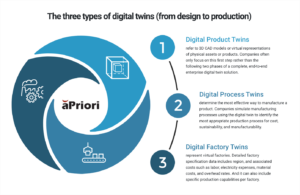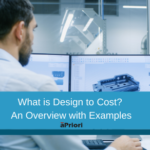- Grundfos procurement is addressing both cost and sustainability
- Manufacturing’s new currency: The carbon footprint
- Supply chain digital twins can drive sustainable sourcing initiatives
Grundfos develops innovative pump solutions and water technology to help conserve water – one of the world’s most precious resources. The world’s largest pump manufacturer serves industries across residential & commercial buildings, municipal water supply & wastewater, agriculture & irrigation, and industrial equipment. The company’s products and solutions are integral to providing millions of people every day with safe drinking water.
In keeping with its commitment to sustainability, Grundfos is aligning on two of the United Nation’s 17 Sustainable Development Goals (SDGs). Grundfos believes it can make a significant difference with two of those goals. The first (SDG6) addresses sustainable management of water and sanitation. The second (SDG13) focuses on combatting climate change via flood control and clean energy source solutions.
Grundfos and the Next Phase of Sustainability
Grundfos, a participant of aPriori’s Sustainability Insights Early Adopter program, was in the early phases of incorporating the carbon footprint into product design. The company wanted to understand cost versus carbon tradeoffs, determine their energy usage, and identify material waste.
The company needed to factor sourcing and procurement costs into the engineering aspect. It was at this juncture that aPriori did what it does best – providing Grundfos with fact-based insights and details that are not accessible to most manufacturers.
“We use aPriori extensively within purchasing as the should costing tool and are achieving some $3 million year over year on price reduction.” – Tonni Rasmussen, Grundfos Senior Cost & Value Engineer
Manufacturing’s Newest Currency: The Carbon Footprint
Determining material, labor, and overhead costs as well as the specific currency used is straightforward. Identifying the carbon footprint is more problematic. Instead of using US dollars or Euros to calculate costs, the newest currency is the carbon footprint. But how do you calculate its cost?
“We do not know the [actual] value of one ton of carbon,” said Rasmussen. “That is still a fluffy number.” He added that organizations need to have a better understanding of how to measure and address their carbon footprint cost.
He cited an example of carbon versus cost in action. “We realize that in purchasing, if we have a price of let’s say Euro from Germany, and we have one ton of carbon footprint, we can get that to half the price in India but with three tons of carbon footprint. Now, if we compare these two, the cost for Grundfos would probably be the same because at a point we need to be taxed on the carbon footprint, said Rasmussen. But the buying price, the price that we pay is half the price.”
To underscore this carbon learning curve, Rasmussen poses business scenarios to consider such as “Who should make the decision on which supply chain we should select?” He explained that suppliers are most often measured on the purchase price – and only the price. He added that their category management is being measured on it as well.
Learn more about aPriori Sustainability Insights.
Optimize the Supply Chain for Sustainability
As a company, Grundfos also is being measured on sustainability. Both factors (price and sustainability) leave them at a crossroads. Rasmussen says supplier selection often will prompt them to escalate the process higher in the organization. Grundfos recognizes its customers wield tremendous influence on their business decisions. Critical insights in comparing carbon versus cost can facilitate the decision-making process and its impact on the final product.
Grundfos has the advantage of a baseline for sustainability and the tools to track it. But tradeoff questions still linger. Many manufacturers – particularly in the US where regulations are a bit behind the EU – are establishing a baseline for their carbon footprint as well as how various suppliers and geographic areas influence them. aPriori has Regional Data Libraries, providing up-to-date information on supplier pricing in 87 geographic areas throughout the world.
Manufacturers can apply cost methodologies to calculate carbon for sustainability initiatives. To further improve sustainability while considering costs, Grundfos had to look at its supply chain. From its perspective, it was no longer a cost consideration as to which suppliers they used but also a sustainability one. Cost versus carbon tradeoffs generated more questions than answers. Grundfos had to ask themselves, “What do we want to prioritize? How do we want to approach it?”
aPriori provides Grundfos with hard data on its energy usage and material waste, giving a clearer, more accurate picture of its carbon footprint. Then better decisions can be made as to where the tradeoff should be between carbon and cost.
How Digital Twins Support Sustainable Sourcing
Digitalization strategies continue to evolve. McKinsey and other industry leaders are coalescing around the idea of connecting multiple digital twins to provide end-to-end visibility, insights, and response. Here are the three types of digital twins (from design to production):
- Digital Product Twins refer to 3D CAD models or virtual representations of physical assets or products. Companies often only focus on this first step rather than the following two phases of a complete, end-to-end enterprise digital twin solution.
- Digital Process Twins determine the most effective way to manufacture a product. Companies simulate manufacturing processes using the digital twin to identify the most appropriate production process for cost, sustainability, and manufacturability.
- Digital Factory Twins represent virtual factories. Detailed factory specification data includes region, and associated costs such as labor, electricity expenses, material costs, and overhead rates. And it can also include specific production capabilities per factory.
Learn more about the Digital Factory with our in-depth guide.
The Digital Process Twin Automates for Greater Impact
The World Economic Forum notes that without a universal standard, the decarbonization challenge will continue to be treated as a regional issue, even though the implications are global. Standardization is crucial to effective reporting and trading emissions beyond borders as well as ensuring the best route for processing information for better decision-making.
One strategy is to develop answers to our own questions, according to Rasmussen. He said Grundfos is drilling down in their discussions to ask, “What sources are we using? What is our common understanding of our internal standards?” He shared that the idea is to create an internal foundation around these questions and answers. Then all levels of the organization are on the same page – speaking the same language and viewing resources in the same light.
A digital process twin solution like aPriori takes out the carbon footprint guesswork. It provides real-time data to indicate energy usage, material waste, and more. Now, you have a single and true source for your carbon footprint. Then it’s up to your organization’s decision-makers to determine the most advantageous tradeoff between carbon and dollars.
Successful companies understand that sustainability needs to be integrated into their overall manufacturing operations and business processes. However, it is essential that it is visible throughout the product development lifecycle. Then, and only then, can cross-functional communication and collaboration improve manufacturability and sustainability without impeding costs. Without it – and the hard data it provides – you can’t make any real decisions. In the words of one aPriori customer, “If you really want to have an impact, automate.”
There's More to Sustainability Than Lowering CO2
See how aPriori improves sustainability, performance, and cost via design and manufacturing insights.








